Dr. Phil Zeltzman’s Blog
Even dinosaurs got cancer!
We regularly talk about cancer in this blog.
And we’ve talked about one aggressive type that can affect dogs (and people) (and rarely cats): bone cancer, aka osteosarcoma.
For the first time ever, scientists just discovered that even dinosaurs got cancer!
The dinosaur in question is a Centrosaurus.
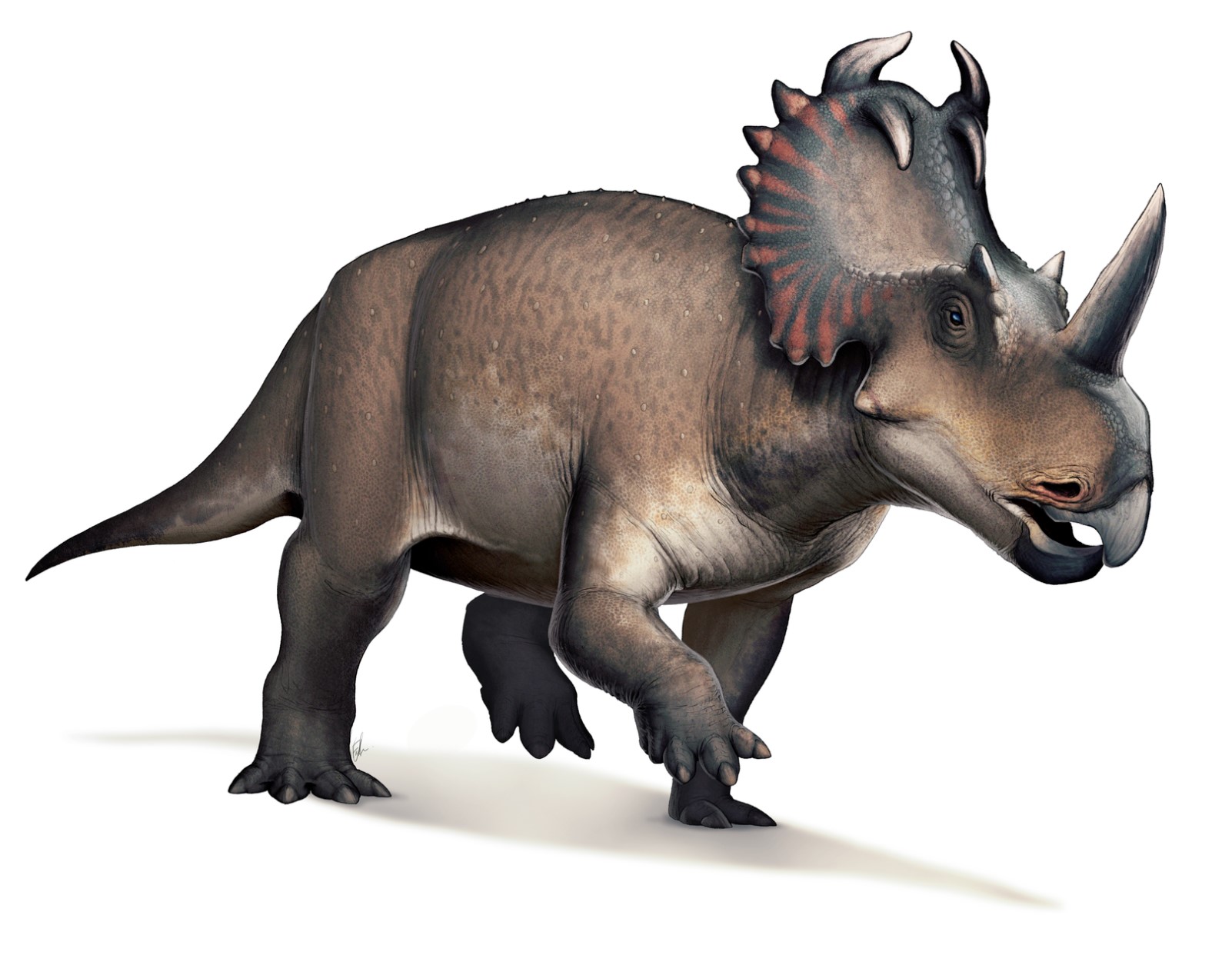
Centrosaurus was a lovely plant-eating “horned dinosaur” that stood 18 foot tall (almost 6 meters) around 76 million years ago.
Scientists from the Royal Tyrrell Museum of Paleontology (Alberta, Canada) discovered the bone with cancer in a pile of bones in Dinosaur Provincial Park in Alberta. The dinosaurs may have died in a flash flood.
The bone in question is a fibula, the small bone along the tibia or shin bone (and the sharp bone in a chicken leg or drumstick). The scientists confirmed the type of cancer via CT scans and under the microscope. The findings were published in the medical journal The Lancet.
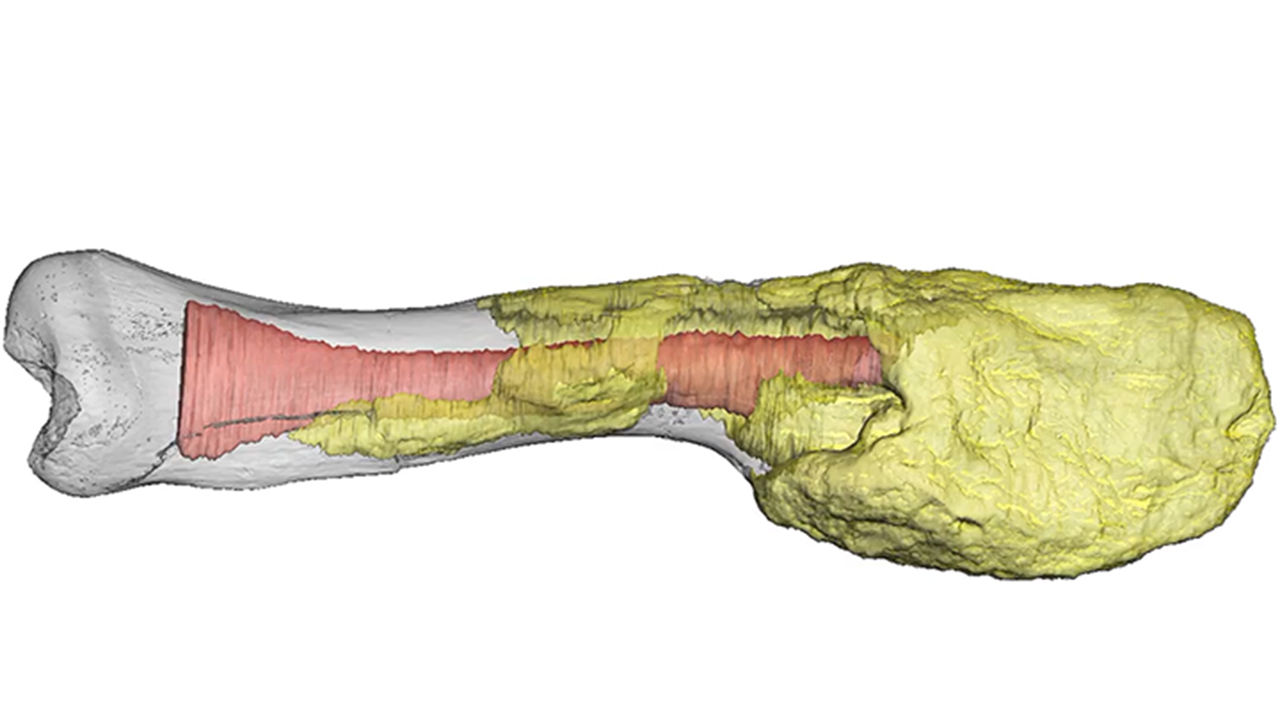
Why should we care? It’s very interesting from an evolution standpoint. It means that cancer existed when dinosaurs lived, well before mammals and reptiles became two different animals.
Royal Ontario Museum paleontologist David Evans told Smithsonian writer Riley Black: “Dinosaurs can seem like mythical creatures, but they were living, breathing animals that suffered through horrible injuries and diseases. This discovery certainly makes them more real and helps bring them to life.”
Phil Zeltzman, DVM, DACVS, CVJ, Fear Free Certified

Dr. Phil Zeltzman is a traveling veterinary surgeon in Pennsylvania & New Jersey. An award-winning author, he loves to share his adventures in practice along with information about vet medicine and surgery that can really help your pets. Dr. Zeltzman specializes in orthopedic, neurologic, cancer, and soft tissue surgeries for dogs, cats, and small exotics. By working with local family vets, he offers the best surgical care, safest anesthesia, and utmost pain management to all his patients. Sign up to get an email when he updates his blog, and follow him on Facebook, too!
Rescued Dachshund serves as powerful reminder to spay your pets
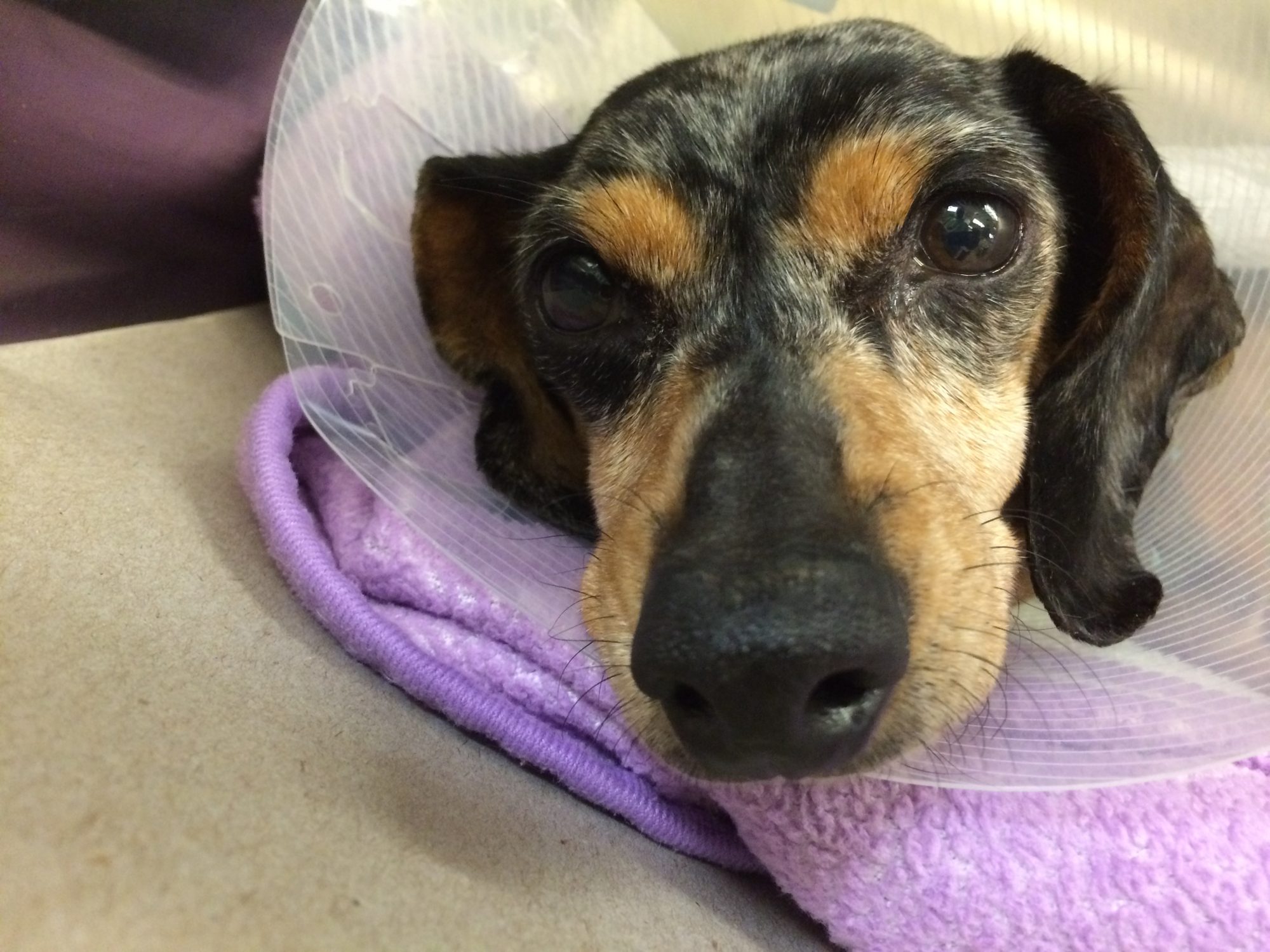 Angel was rescued after she was found running on the side of the road. An approximately 8-year-old Doxie, this sweet girl needed all the help she could get.
Angel was rescued after she was found running on the side of the road. An approximately 8-year-old Doxie, this sweet girl needed all the help she could get.
She was suffering with two large mammary masses – one with open draining wounds.
Because there was a 50-50 chance the masses were cancerous, there was a risk of spreading to the lung. We took chest X-rays before surgery. It didn’t show any spreading to the lungs, but it did show calcium deposits inside the tumors.
This surgery at Berks Animal Emergency & Referral Center was quite the challenge. Removing all the affected tissue required removal of the 2 masses and some healthy skin around it. In addition, in order to try to “get it all”, some of the muscles of her belly (her abs) were removed. She was also spayed during the procedure. The skin stitches were so tight, I was concerned that they would pull through the skin. To try to decrease that risk, a few special sutures, called stent sutures, were placed along the long incision. One week after surgery, the incision looked great and the stents were removed.
Unfortunately, the biopsy of the masses came back as low-grade cancer.
The only way to virtually eliminate the risk of breast cancer is to spay your female dog (or cat) before her first heat cycle.
Dogs with mammary tumors still should be spayed. It’s too late to prevent mammary tumors, but you can stop a life-threatening infection of the uterus called pyometra.
Angel is looking for a foster home or a furrever home to provide a comfortable place to recover and get the TLC she desperately deserves! Please contact Dachshund Rescue of Bucks County at www.doxierescue.com or (215) 736-3338 for more information.
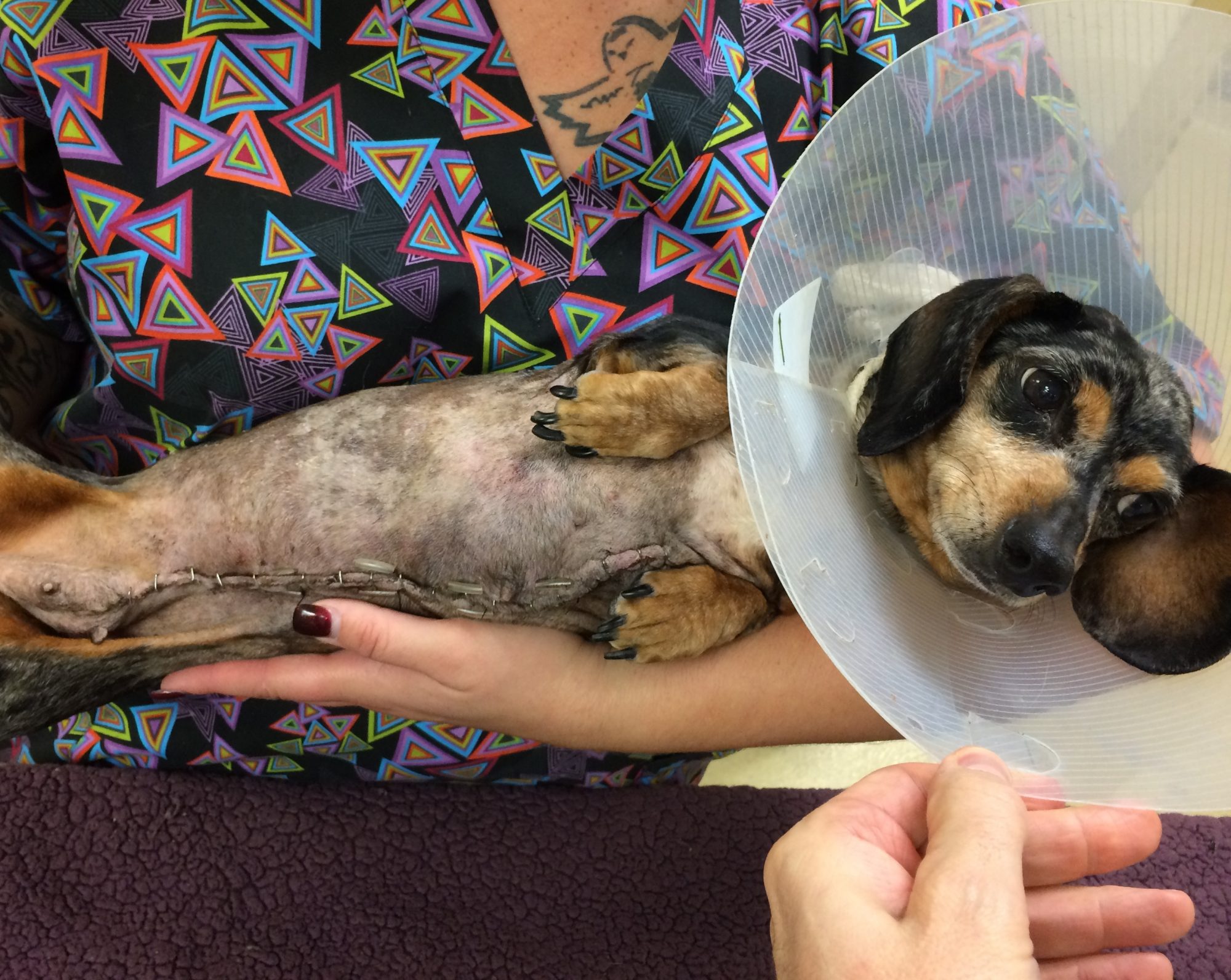
Angel is recovering nicely one week after surgery.
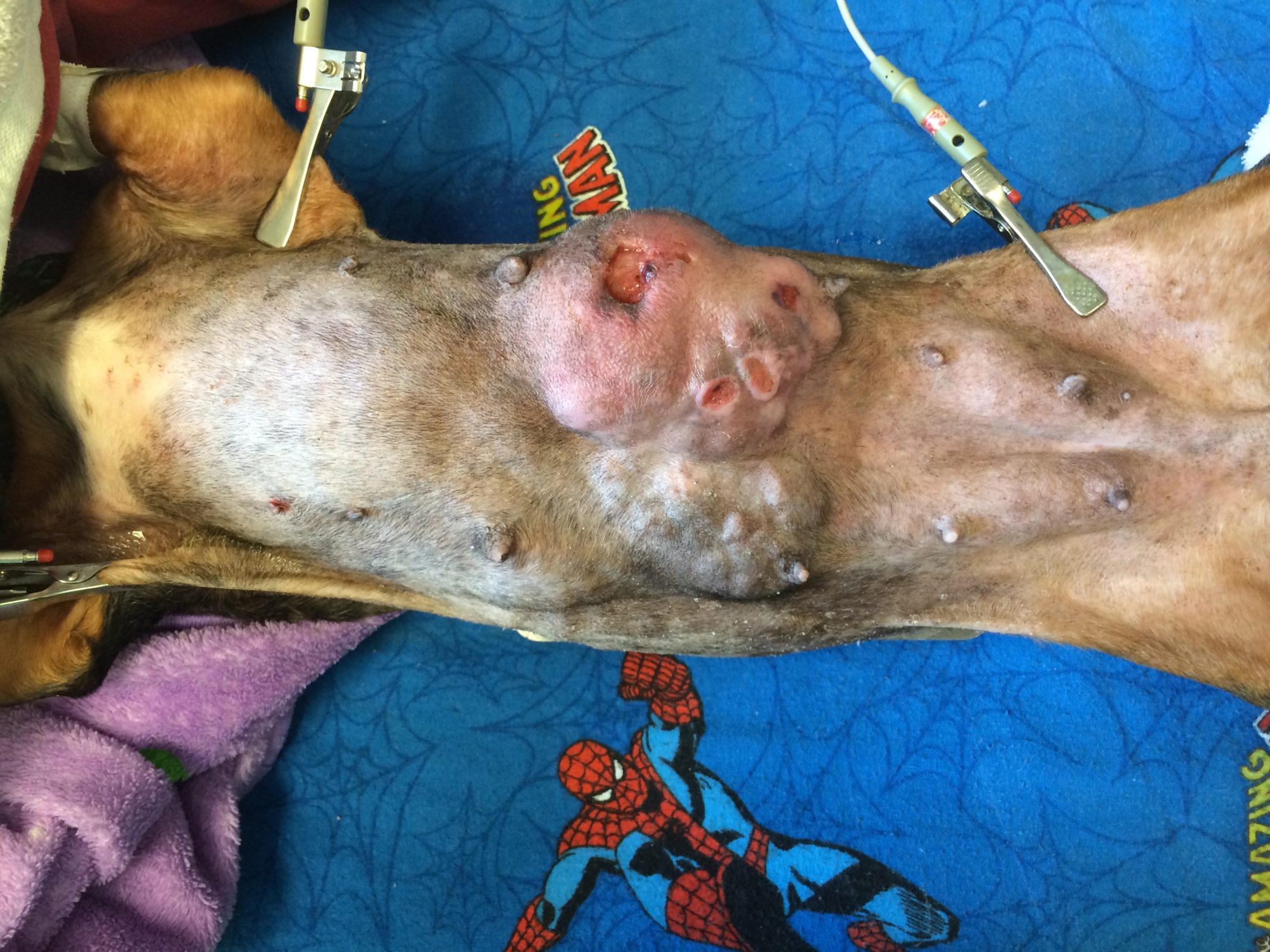 Angel’s mammary tumors before surgery. |
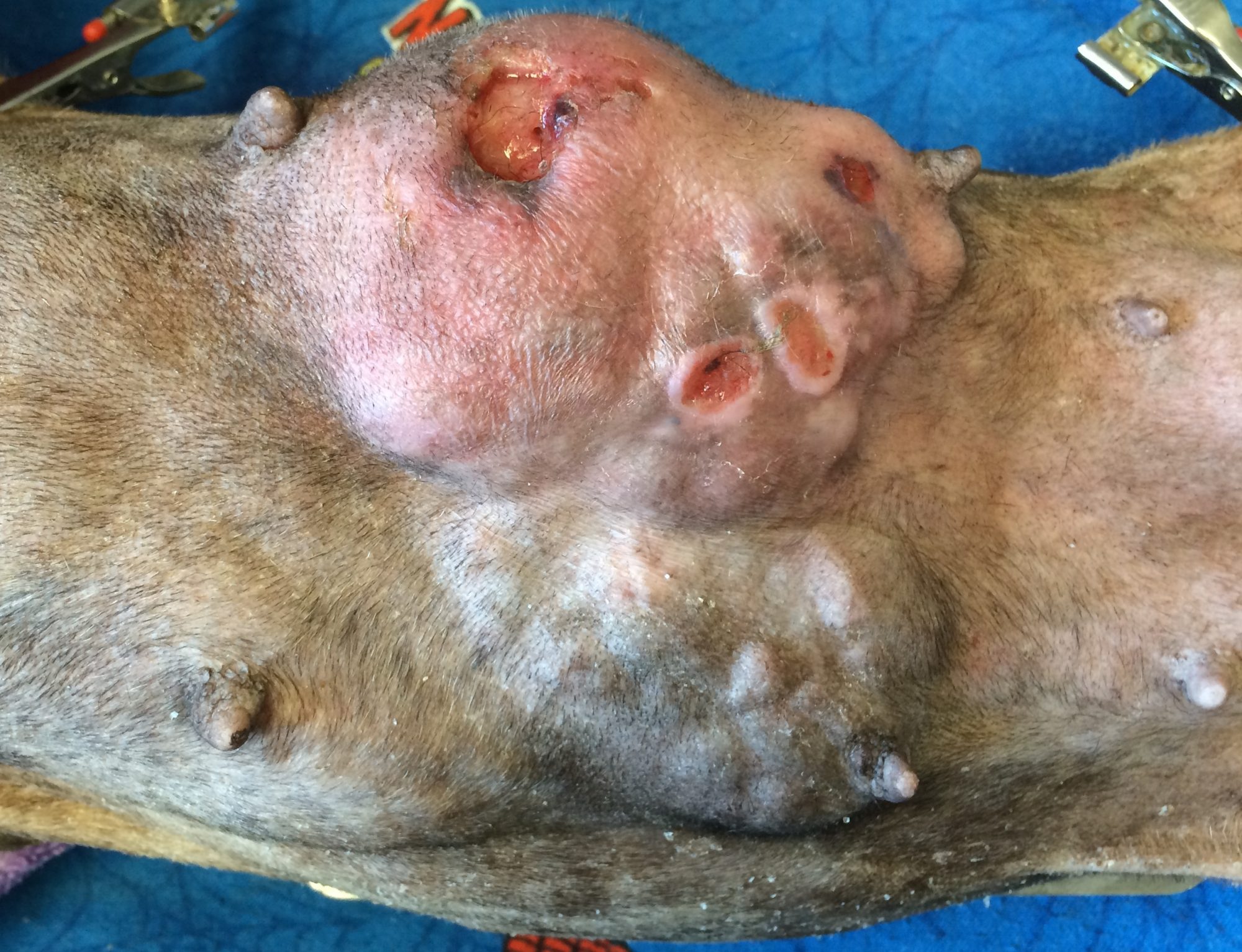 A close up of the mammary masses. |
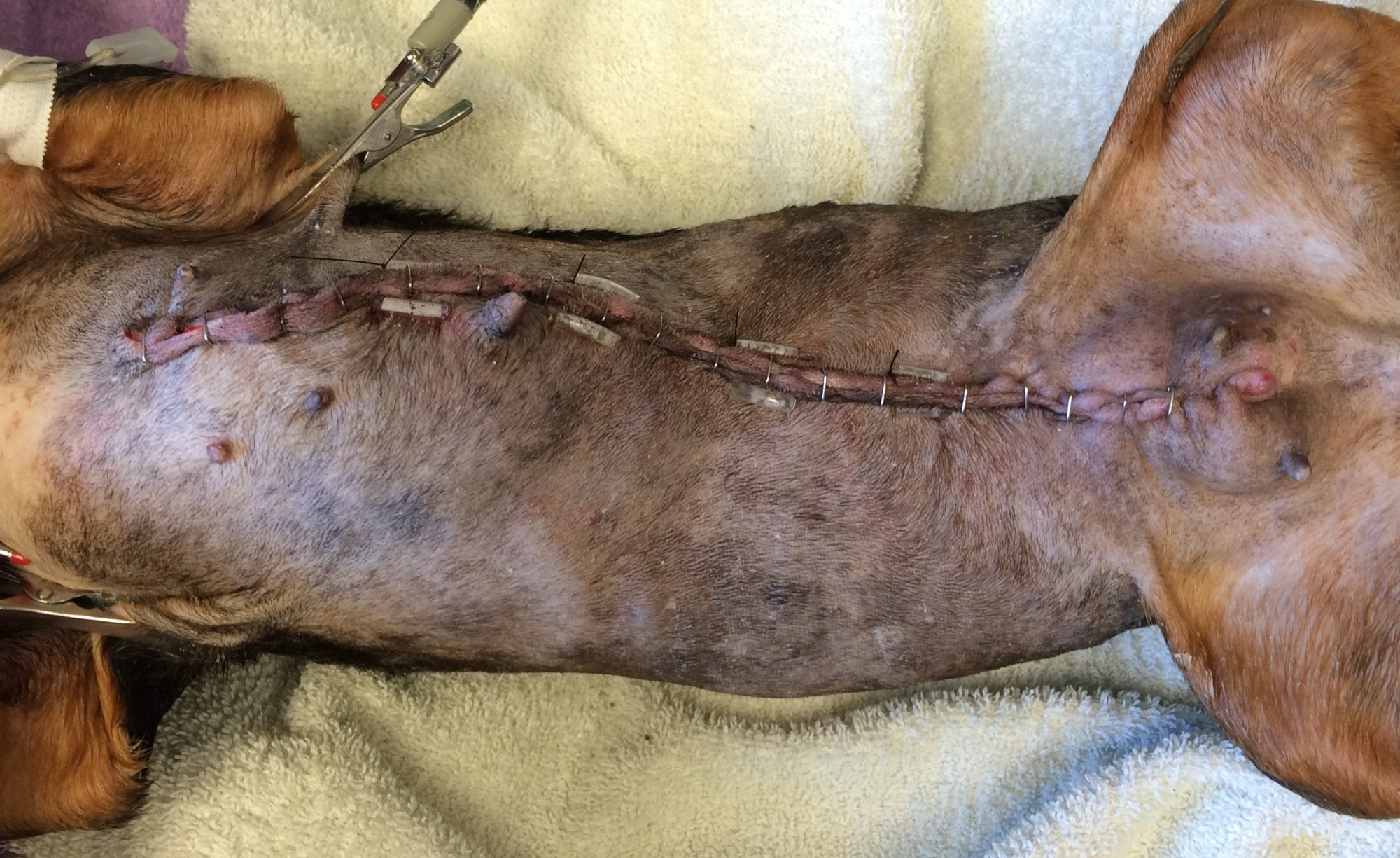 Angel’s surgery was complicated, and closing the incision was a challenge. |
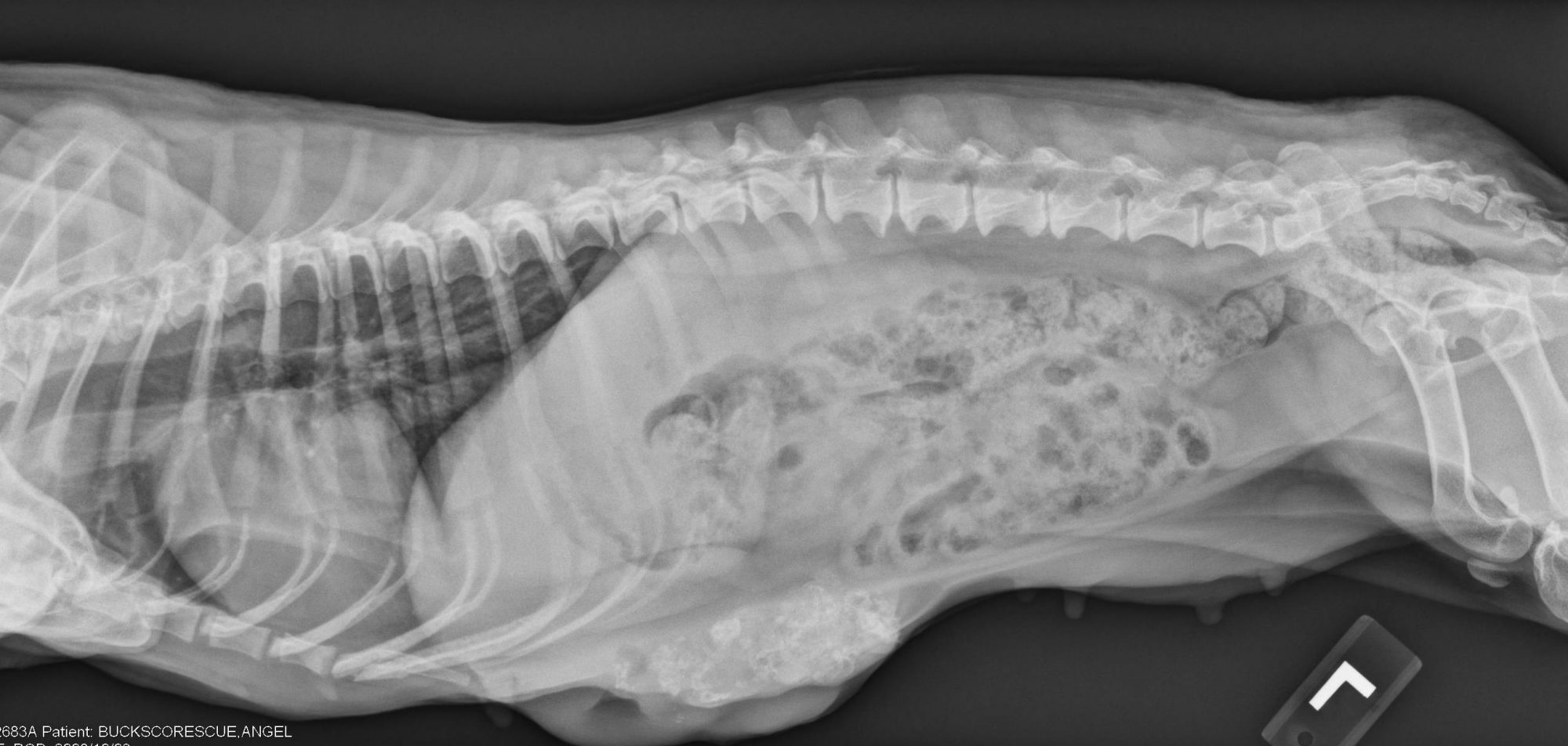 You can see calcium deposits in the X-ray. |

Dr. Phil Zeltzman is a traveling veterinary surgeon in Pennsylvania & New Jersey. An award-winning author, he loves to share his adventures in practice along with information about vet medicine and surgery that can really help your pets. Dr. Zeltzman specializes in orthopedic, neurologic, cancer, and soft tissue surgeries for dogs, cats, and small exotics. By working with local family vets, he offers the best surgical care, safest anesthesia, and utmost pain management to all his patients. Sign up to get an email when he updates his blog, and follow him on Facebook, too!
Feline fibrosarcoma in the cheek: A surgical story
When 9-year-old Daphne came to me at Berks Animal Emergency & Referral Center for a mass in her left cheek, the biopsy results told the story cat owners least want to hear: Cancer, specifically, fibrosarcoma. Continue…

Dr. Phil Zeltzman is a traveling veterinary surgeon in Pennsylvania & New Jersey. An award-winning author, he loves to share his adventures in practice along with information about vet medicine and surgery that can really help your pets. Dr. Zeltzman specializes in orthopedic, neurologic, cancer, and soft tissue surgeries for dogs, cats, and small exotics. By working with local family vets, he offers the best surgical care, safest anesthesia, and utmost pain management to all his patients. Sign up to get an email when he updates his blog, and follow him on Facebook, too!

